Varieties of Siberian tomato varieties
Siberian varieties of tomatoes are excellent for growing in conditions of a short and not very warm summer. They were bred through selective work specifically for such growing conditions atypical for culture.
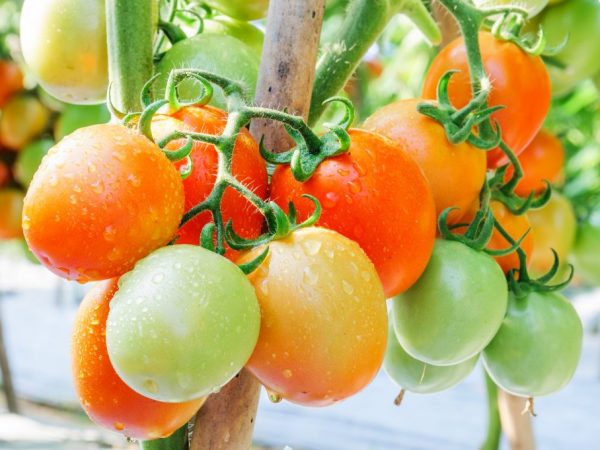
Varieties of Siberian tomato varieties
A properly selected tomato will help gardeners get excellent tomato yields even in Siberia. In terms of taste, such fruits are in no way inferior to varieties intended for cultivation in the southern regions, as well as in eastern Russia.
Features of the choice of varieties
If a summer resident plans to grow tomatoes in Siberia, then he must take into account the fact that the summer in this region is quite short, and the average temperature is much lower. That is why it is necessary to give preference to zoned cultures.
If you plant any other tomato, then there is a great chance to get unripe, tasteless tomatoes or not to remove a single fruit from the bush at all. The main properties that you need to be guided by when choosing a variety are:
- Early maturity - late tomatoes will not have time to ripen in a short summer.
- Late blight resistance also plays an important role. In harsh climatic conditions, plants are planted in greenhouses, where the air humidity is always higher than in open ground. This can provoke outbreaks of late blight.
- The height of the bush - the higher it is, the more problematic it is to grow it in a greenhouse. If the dimensions allow you to plant indeterminate plants, then you can safely do this. However, you will have to build special supports for them and tie up the shoots to them in a timely manner. Under the weight of the fruit, branches that are not tied up can break.
- Resistant to temperature drop. In the conditions of the Siberian summer, significant cold snaps are possible and ordinary tomatoes will not cope with them.
It is also worth considering the purpose of the variety. There are tomatoes for conservation, salad, and those that can easily tolerate long-term storage and transportation. Based on the needs, you need to choose one thing, although the breeders have already been able to develop plants for universal use.
Siberian varieties
There is a huge selection of seeds on the market for growing in Siberia. From this assortment, everyone will be able to choose the right one according to their requirements.
Siberian Precocious
One of the most popular varieties is Siberian early maturing. The period from the appearance of the first shoots to the beginning of fruit ripening takes on average 115 - 130 days. Determinate bush, about 45 - 50 cm high. Leaves are dark green with a light downy down.
The tomatoes are quite large. Their weight ranges from 70 to 120 g. The fruits are fleshy, round, and the skin is dense, which makes it easy to transport tomatoes without prejudice to their presentation. It is also distinguished by high productivity. From 1 m², you can get up to 10 - 11 kg of the crop.
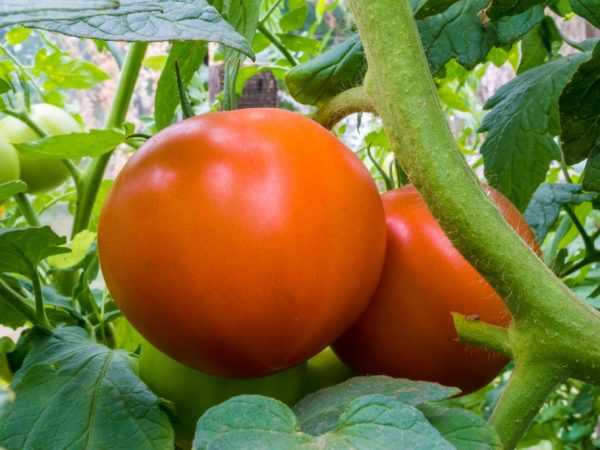
The fruits can be consumed in any form
The fruits are ideal for fresh consumption, as well as for canning whole fruits. Due to the dense structure of the pulp, they can be used to prepare sauces and tomato paste. Despite all its advantages, the tomato is becoming obsolete. It is difficult for him to compete with modern hybrids.
Malachite
The variety of Siberian tomatoes Malachite has quite unusual fruits. Its ripe tomatoes remain green with thin yellowish veins on the skin. Such an interesting color makes it in demand in the seed market.
The bushes are indeterminate, therefore, they require timely garter. The plant is formed with a maximum of 3 stems and is pinned as the stepsons grow. The plant belongs to mid-season varieties, but manages to mature in Siberia.
Fruits are medium-sized, 50-60 g, have a round regular shape. They look good in bottles when pickled, and fresh vegetable salads are made delicious and unusual. Another feature of this tomato is its resistance to fruit cracking.
Malachite is resistant to late blight and powdery mildew. He doesn't care about root rot, which usually affects plants in greenhouses.
Siberian Tosya
This variety is represented by early ripening cream of deep red color. The height of the bushes does not exceed 45 cm. Such a compact plant is convenient to grow in greenhouses. It does not require a garter or pinning.
Siberian Tosya produces fruits of an elongated oval shape with a dense fleshy wall. Tomatoes are very juicy with a rich sweet taste. The skin is quite dense, which means that the variety is able to maintain its presentation for a long time.
The features of this tomato are also:
- The plant is varietal, which means that you can collect seeds from it yourself for further planting. This not only gives you confidence in the seed quality, but also saves you a lot of money.
- Long ripening period guarantees long-term fruiting. Almost until the onset of frost, the bushes growing in film shelters produce fresh tomatoes.
- Resistance to fungal diseases, including late blight. This feature makes them much easier to grow.
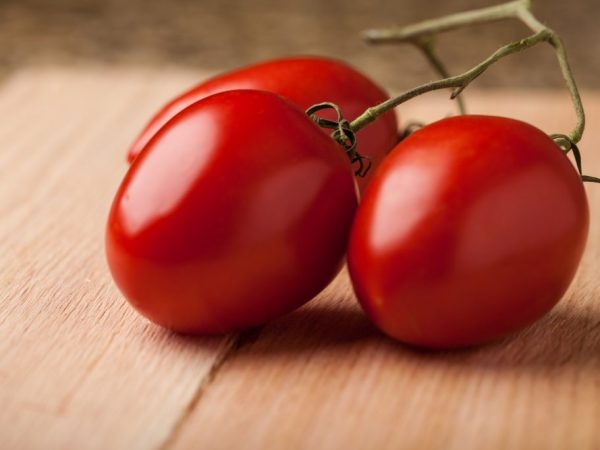
Tomatoes have a sweet taste
It is also worth noting the high yield of Nastya Sibiryachka. From 1 m² you can harvest up to 11 - 12 kg of good quality tomatoes.
Siberian Pirouette
Siberian Pirouette, absolutely unpretentious in care, has shown itself as a productive early variety. From the beginning of the growing season to the appearance of the first ripe fruits, it takes about 120 - 125 days.
Its fruits have a strongly elongated shape with a small tip at the end. Tomatoes are very juicy, so they are great for making sauces, juices and fruit drinks, and they are also good in fresh salads. Their skin is delicate and easily injured, therefore it is recommended to transport them only in wooden or cardboard boxes in one layer.
The bushes of this plant are indeterminate and reach a height of about 2 m. They must be tied and pinned. This variety is weakly resistant to late blight, therefore, before the formation of the ovary or at the first signs of the disease, it is treated with copper sulfate.
Sibiryachok
Sibiryachok is distinguished from the previous varieties by the relatively small size of the fruits. Their weight does not exceed 50 g, which is not typical for seeds of Siberian selection. The principle of arrangement of fruits is bunchy. The ovary is formed after 4 true leaves.
The fruits are suitable for:
- whole-fruit canning;
- preparing fresh salads and snacks;
- preparation of juices, fruit drinks and sauces.
The plant reaches a height of 50-65 cm and has a fairly compact structure. The leaves are slightly elongated and deep green in color. The plant is resistant to most of the known tomato diseases, but can be damaged by insect pests.
Mamin Sibiryak
One of the few Siberian tomatoes that are intended for growing outdoors is Mamin Sibiryak. The plant is super early maturing.The first ripe fruits appear 100 - 103 days after the seeds germinate.
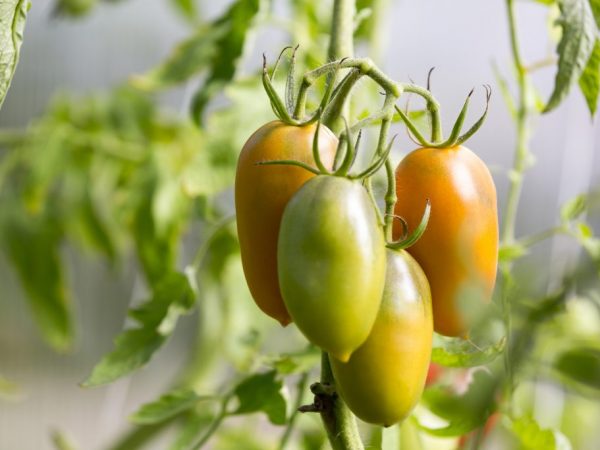
This variety belongs to the super early ripe
The fruits have an elongated pointed shape. The wall is rather fleshy with a high dry matter content. Thanks to their dense skin, tomatoes can be kept fresh for about 3 weeks without losing their quality.
Siberian yellow giant
This variety is the standard of Siberian yellow tomatoes. The characteristic of a tomato is its high yield, excellent taste, and a long ripening period. It is somewhat similar to the Date tomato, but has a higher yield.
The plant is resistant to sudden drops in temperature, so it can be grown not only in a greenhouse, but also outdoors. The Yellow Giant is resistant to late blight and other fungal diseases.
Its fruits are large plum-shaped. The pulp is tender and juicy. The tomato is ideal for fresh consumption and for preparing vegetable salads. Weight varies from 80 to 140 g, depending on the quality of the care of the bushes.
Siberian Tiger
One of the most unusual varieties of this crop is the Siberian Tiger tomato. Its fruits grow up to 120 to 170 g in weight, and their color has a dark pink color with darkening at the stalk.
The fruits have 10 - 12 seed chambers, like the Siberian Bear. The pulp is very juicy and fleshy. Despite its impressive size, the seeds of this tomato are quite small.
The height of the bushes reaches 180 - 200 cm, so they need a garter. Sometimes individual shoots have to be fixed due to the high load on the crop.
Other varieties
In addition to the most popular tomatoes, there are also those that are not yet in high demand among summer residents. This does not mean that their varietal qualities are in some way inferior.
The highest yielding tomatoes include:
- Siberian Soul;
- Express;
- Abundant Bouquet;
- Star.
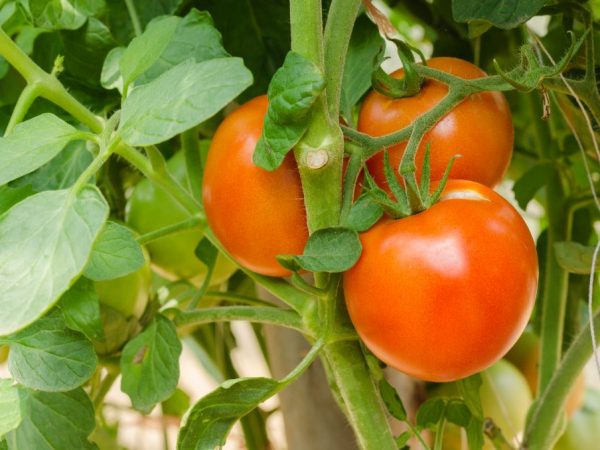
Several varieties of tomatoes boast high yields.
They give up to 15 kg per 1 m², which is a record figure. Severnaya Iskra, Partizan and Kazak also performed well. Their fruits ripen amicably and are great for whole pickling and pickling.
Hybrids
In addition to varietal varieties of tomatoes, there are also hybrids. On the packaging of such seeds, you can see the F1 mark. This means that the plant belongs to the first generation hybrids. They are usually more fertile and resistant to various diseases.
The only drawback is that you need to buy planting material annually. Such material costs are due to the fact that the seeds do not retain the characteristics of the parent plant. Of course, you can plant them, but you can not expect a harvest from such a bush.
Novosibirsk Hit F1
This hybrid has a juicy flesh of a bright red hue. In addition, its taste can compete with any other tomato.
The Novosibirsk hit belongs to the early varieties and bears the first fruits as early as 115 - 120 days after germination. The height of the bushes is relatively small - about 50-60 cm.
The plant is not susceptible to late blight, and also does not suffer from root rot. Despite these pluses, there is a small minus. The yield of this variety of tomato is not high, only 5 - 6 kg per m².
Northern crown F1
The Korona hybrid is characterized by an unusual structure of the bushes. They develop into one shoot, with a height of 170 to 210 cm. This tomato is grown only in greenhouses, since they are less resistant to cold snaps than other representatives of Siberian selection.
Summer residents usually remove excess ovaries in order to get the largest possible fruits., Weighing up to 500-650 g. These tomatoes are good in fresh salads, and also excellent juices and fruit drinks are obtained from them.
The plant has a highly developed root system, which makes it feel great even on poor soil. Another advantage is the high degree of resistance to fungal diseases.
Siberian Shangi F
This tomato received such an interesting name by analogy with the dish of the same name. It is a flat cake made from yeast dough. The fruits of the Siberian Shangi F1 tomato also have a strongly flattened shape and a ribbed edge.
Bushes grow up to 2 m in height and need a garter and pinching. If the plant is planted in a greenhouse, then the first ovary is already laid over 4 real leaves. The fruits ripen quickly, but cannot be stored for a long time. They begin to rot already 3 - 4 days after harvest.
Conclusion
In order to choose a tomato for growing in Siberia, it is often enough to read the description on the package. There you can find complete information about the qualities of the plant. There you can also find recommendations for cultivation.
Siberian varieties can be grown in other areas as well. They are not picky and require minimal maintenance.


